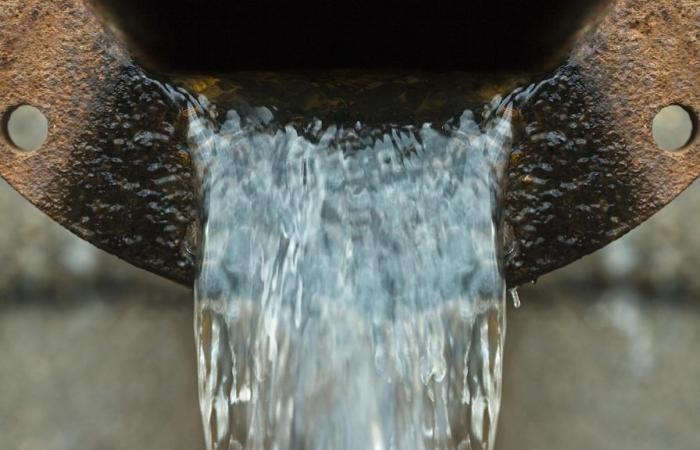Dozens of municipalities in Quebec continue to discharge their dirty water into the environment without treatment. Bringing your facilities up to government standards is often a major challenge for mayors.
The majority of the 77 municipalities shown on the map below are located outside major urban centers, and have fewer than 2,000 inhabitants.
For certain cases, it only concerns one or more sectors of the municipality which are not served by a wastewater treatment plant, and not the entire municipality
specifies the Ministry of the Environment, the Fight against Climate Change, Wildlife and Parks (MELCCFP).
End of widget. Return to start of widget?
Some municipalities are equipped with screens, a system that filters solid pieces from dirty water.
% of the population of Quebec served by a sewer network”,”text”:”These 77 municipalities cover less than 1% of the population of Quebec served by a sewer network”}}”>These 77 municipalities cover less than 1% of the population of Quebec served by a sewer network
specifies the ministry.
Significant costs
In Saint-Michel-de-Bellechasse, contaminated water is sent into the St. Lawrence River through underground pipes. We have the somewhat dubious honor of being among the few who still do it
laments the deputy mayor, Benoit Mathieu.
Open in full screen mode
Saint-Michel-de-Bellechasse discharges its wastewater into the St. Lawrence River.
Photo: Radio-Canada / Raphaël Beaumont-Drouin
The municipality of nearly 2,000 people has been trying to modernize its facilities for almost 10 years. Saint-Michel has a screen, but work to set up a water treatment center must begin next spring.
Estimated cost? million$”,”text”:”It won’t be less than $5million”}}”>It won’t be less than $5 million
according to Benoit Mathieu.
Open in full screen mode
Benoit Mathieu is deputy mayor of Saint-Michel-de-Bellechasse.
Photo: Radio-Canada / Raphaël Beaumont-Drouin
We want to be able to stop sending our wastewater into the river
he wishes.
For a decade, changes at town hall, the complexity of engineering procedures, the pandemic and technological innovations have delayed the implementation of the project, estimates Benoit Mathieu.
Mr. Mathieu wants to avoid increasing citizens’ tax bills. Once installed, the water treatment system will require annual maintenance and labor costs of $80,000.
Administrative burdens
In the case of Saint-Michel-de-Bellechasse and other municipalities contacted by Radio-Canada, Quebec will assume more than 85% of the bill under the Municipal Water Infrastructure Program (PRIMEAU). The municipalities contacted by Radio-Canada appreciate this government assistance, however, the multiple steps and administrative procedures required to obtain this funding are not easy.
Subsidy requests, even if they can be generous, are not something that is easy to request for small municipalities
underlines Céline Veilleux, mayor of Saint-Benjamin since 2023. We don’t have that many staff, there is turnover, there are always additional things asked of us.
I tell you quite frankly: it never stops!
Around sixty homes in the municipality discharge their wastewater into the Famine River, and upgrading the facilities will be expensive. The elected official affirms that she will have to suspend other work: the repair of culverts and municipal buildings, for example. She indicates that setting up a water treatment system is a priority
.
Unacceptable
These are discharges that are unacceptable in 2024, for which the government should have taken action well before
deplores the president of the Rivières Foundation, Alain Saladzius.
Discharged materials such as fecal coliforms and contaminants are sources of pollution, he recalls, they harm the oxygenation of waterways and make environments unsuitable for swimming.
Mr. Saladzius, who previously worked at MELCCFPblames a lack of leadership
from the Legault government.
There is a serious administrative problem in the Quebec government
, he believes. The laborious sharing of skills between different ministries with different orientations and procedures accentuates delays, according to him.

Open in full screen mode
Several sectors of the St. Lawrence are unsuitable for swimming.
Photo: Radio-Canada / Daniel Ricard
There is a lack of leadership, it would take a project manager who can guide the intervention priorities and have free rein
he said. Currently, there are multiple forms to fill out and check. There is very little latitude given to engineers
he said.
Even when the 77 municipalities stop dumping their wastewater into the river without treatment, the province will not be at the end of its troubles, according to Alain Saladzius.
He points out that large cities such as Laval, Repentigny and Longueuil pollute much more by discharging contaminated water into the environment that has undergone superficial sanitation treatment.








